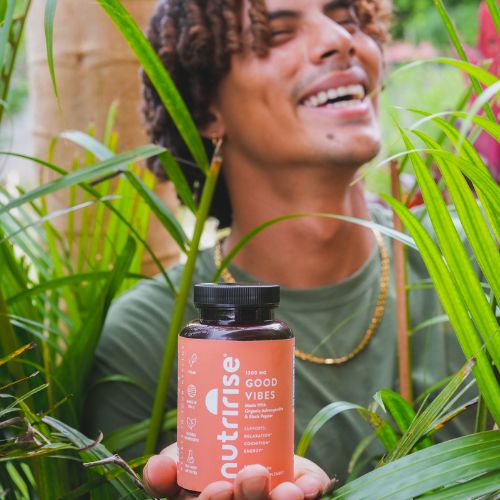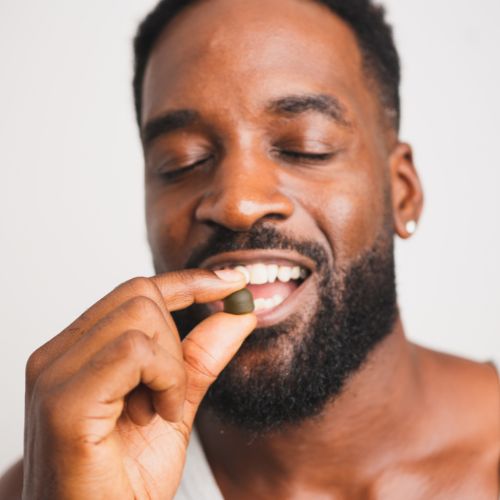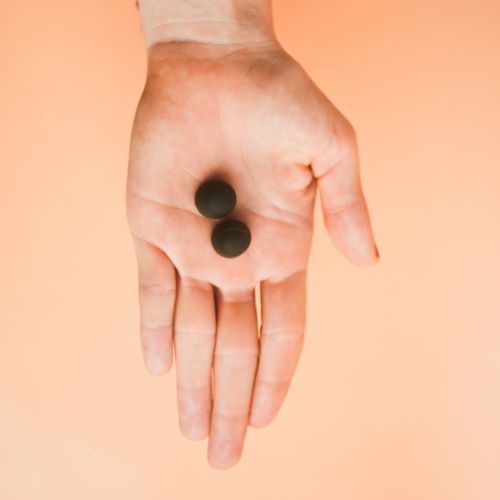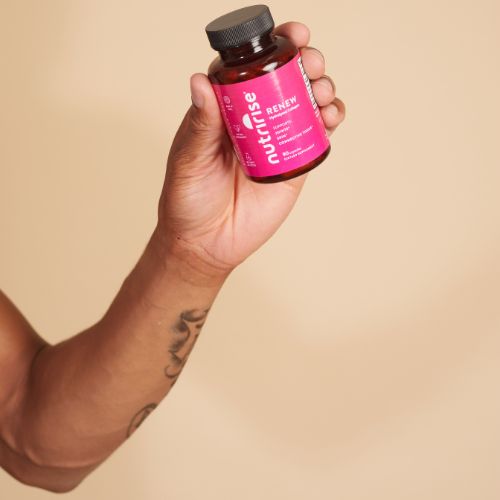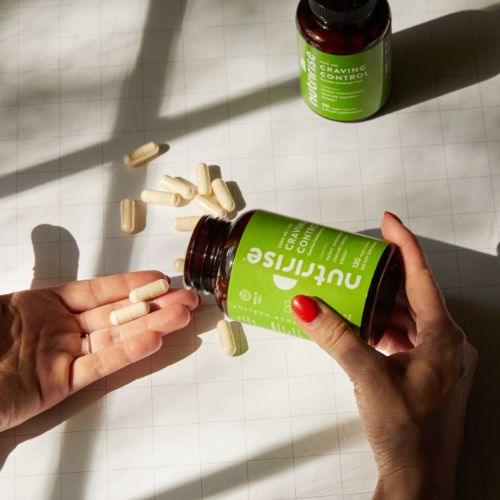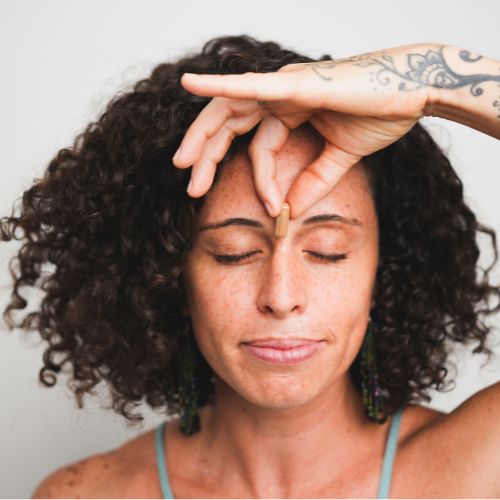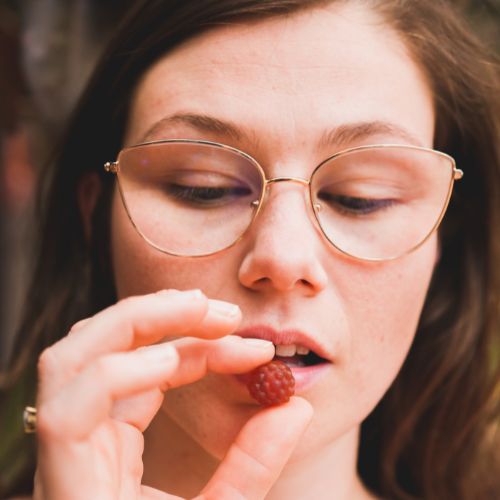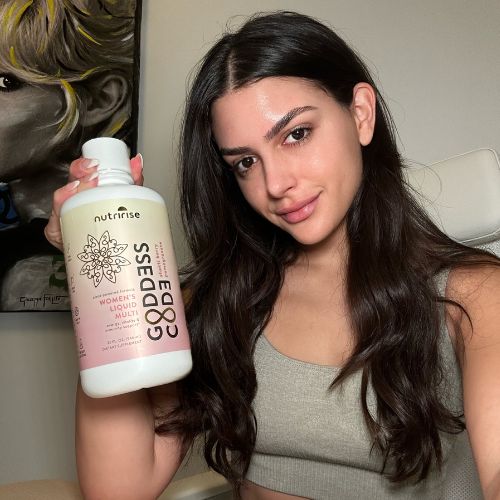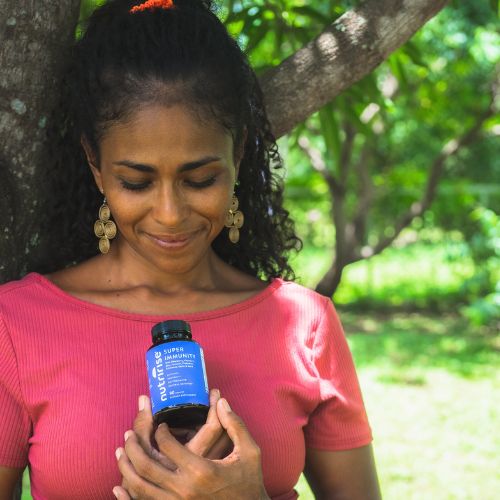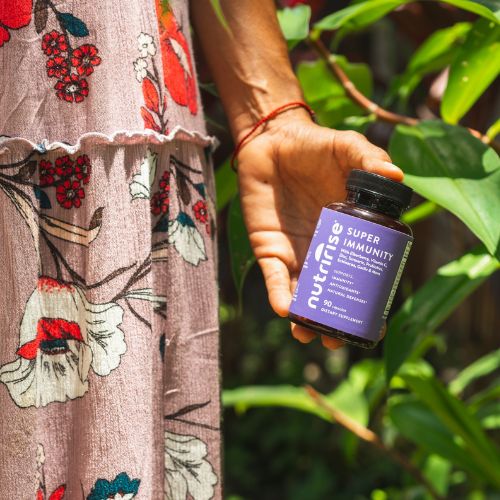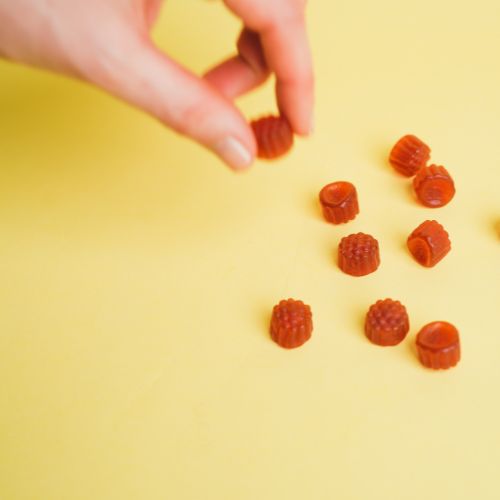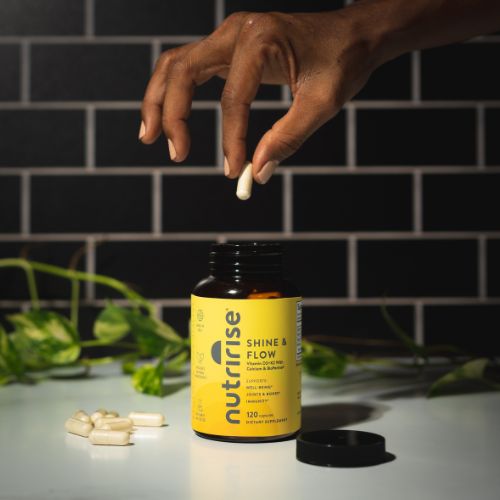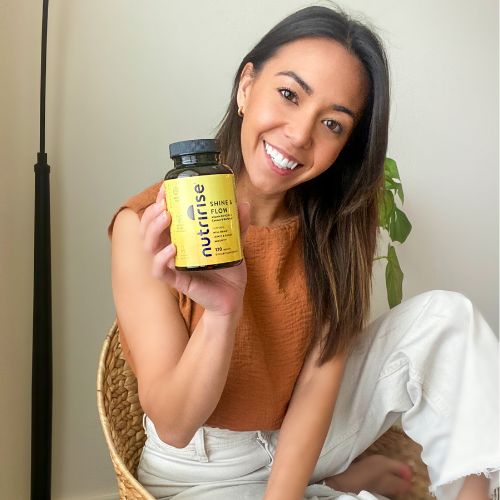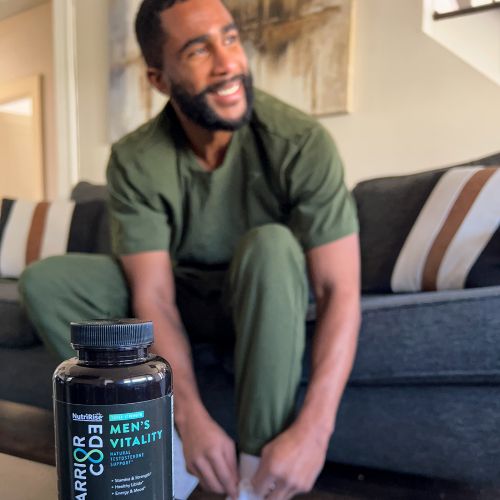1. Downward Facing Dog (Adho Mukha Svanasana)

This classic yoga asana is a great way to get blood flowing to your head, which can help to improve circulation throughout the entire body.
How do you perform the downward-facing dog yoga pose?
-
Start from a standing position and take a forward bend, placing your palms firmly on the ground about shoulder-width apart.
-
Take a few steps back, adjusting your feet to ensure they are hip-width apart.
-
Your body should resemble an upside-down “V” shape.
-
Make sure your upper body and back are forming a straight line, i.e., not curved, and that your arms are fully extended.
-
If it’s too challenging to straighten your legs out completely, try bending your knees slightly until you’re more comfortable.
- Hold this pose for 3-5 breaths and then walk your feet up to your hands and roll yourself up to standing with your palms facing your sides.
2. Standing Forward Bend (Uttanasana)

This yoga pose is excellent for getting the blood flowing to the lower half of your body.
How do you perform the standing forward fold pose?
-
Start by standing straight with your feet hip-width apart.
-
Raise your arms and take a deep breath before bending forward from your hips, keeping your knees bent slightly.
- Let your arms hang down and hold this pose for at least 5 breaths.
3. Seated twist pose (Ardha Matsyendrasana)

This gentle yoga pose is great for getting the blood flowing to your internal organs, particularly the liver, which is responsible for filtering toxins from the blood.
How do you perform the seated twist pose?
-
Sit on the ground with your legs straight out in front of you.
-
Bend your right knee and place your foot outside of your left knee.
-
Place your left elbow on the outside of your right knee and twist your torso to the right towards your left foot.
-
Remember to straighten your spine all the way down to your sitting bones.
- Hold this pose for at least 5 breaths and then switch sides.
4. Camel pose (Ustrasana)

This pose is great for getting the blood flowing to your thorax, neck, and head.
How do you perform the seated twist pose?
-
Start on your knees on a mat, with your knees hip-width apart.
- Place your hands on your lower back, with your fingers pointing towards your hips.
-
Slowly begin to lift your chest and head up towards the ceiling, stretching your back and neck.
-
Keep your elbows close to your sides and engage your core muscles to support your back.
-
As you lift your chest and head up, reach back with your hands and place them on your heels.
-
Keep your head in a neutral position and breathe deeply and steadily throughout the pose while drawing your attention towards your heart center.
- Hold this pose for at least 5 breaths, and then release.
5. Hand-to-big toe pose (Padangusthasana)

This yoga asana is great for getting the blood flowing to your legs and feet. It is one of the many standing poses that also requires you to practice your balance and flexibility.
How do you perform the padangusthasana pose?
-
Stand up straight with your feet hip-width apart.
-
Bend your right knee and reach down to grab your right big toe with your right hand.
-
Keep your left leg straight an hold the pose for at least 5 breaths.
-
Switch sides and repeat.
6. Legs up the wall (Viparita Karani)

Legs Up the Wall Pose is an easy yoga pose and gentle inversion that improves blood flow, especially if you are someone that tends to sit all day. This easy yoga pose can also help to activate the parasympathetic nervous system to boost overall relaxation (especially if you couple it with deep breathing), so much so that you may just fall asleep!
This pose is the perfect act of self care after a long day.
How do you perform the legs up the wall pose?
-
Move your hips as close to the wall as possible.
-
Lean back onto your elbows and lower yourself onto your back.
-
Reach your left and right leg up onto the wall, resting your heels against the wall, squaring your hips.
-
Spend a few minutes here, and inhale deeply.
- Exhale out all the worries that are on your mind as you feel a sense of relaxation spread throughout your body.
Final thoughts
In conclusion, yoga is a great way to get your blood flowing and keep your circulation in tip-top shape. Not only does it get you moving, but it also helps to relax and destress, which can positively impact your heart health. So, if you want to boost your circulatory system, add a daily dose of yoga to your routine. It's a win-win situation - you'll feel good and look good too. So, go ahead and give it a try; your body will thank you for it. Namaste!
Please note: This information is provided for educational purposes only and should not be considered medical advice. Circulation is a complex process that can be affected by a variety of factors, including genetics, lifestyle, diet, and underlying health conditions. Improving poor circulation through yoga for blood circulation or other exercises may help to improve overall health and well-being, but it's essential to consult with a healthcare professional if you’re concerned about your circulatory health.
Additionally, you should seek medical attention immediately if you have any underlying health conditions or are experiencing symptoms such as chest pain, shortness of breath, or swelling. Yoga is a form of exercise, and as with any form of exercise, it's important to listen to your body and never push yourself too hard. If you experience any pain or discomfort during your practice, stop immediately and seek guidance from a certified yoga instructor or healthcare professional.













